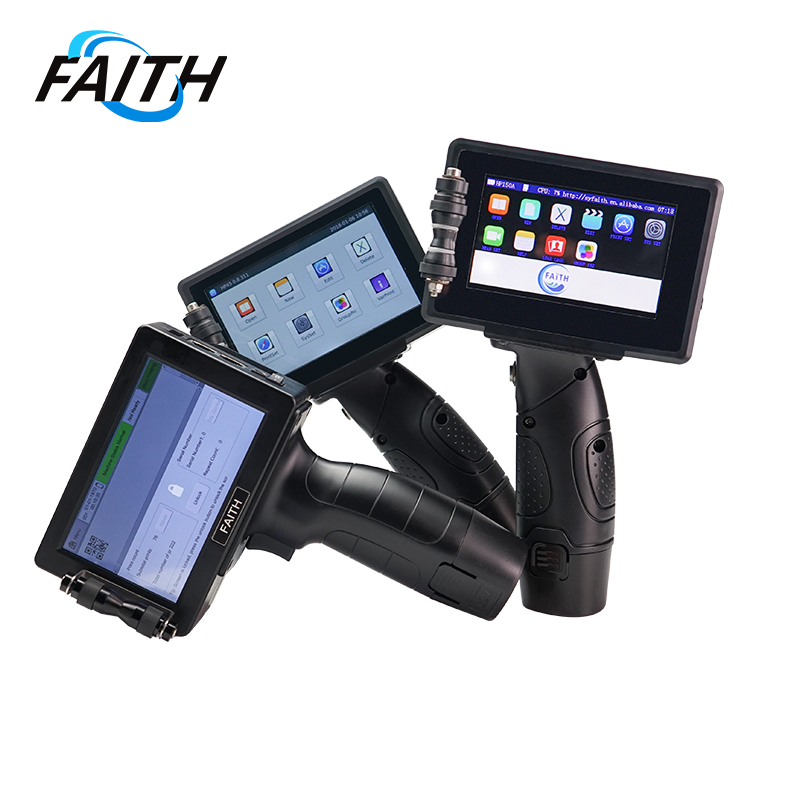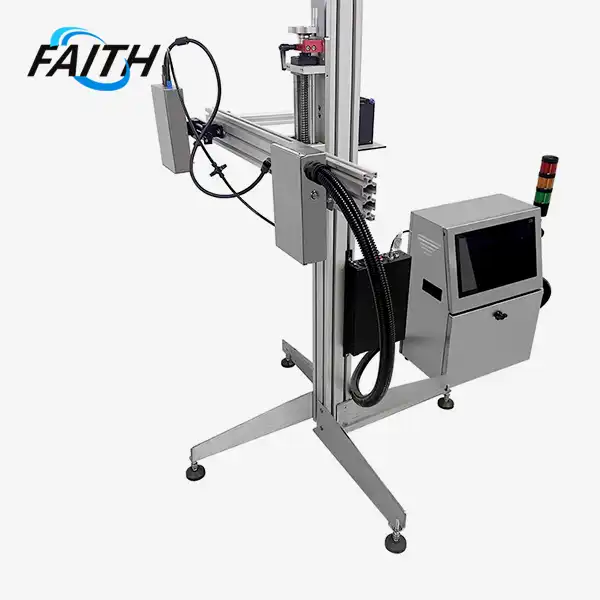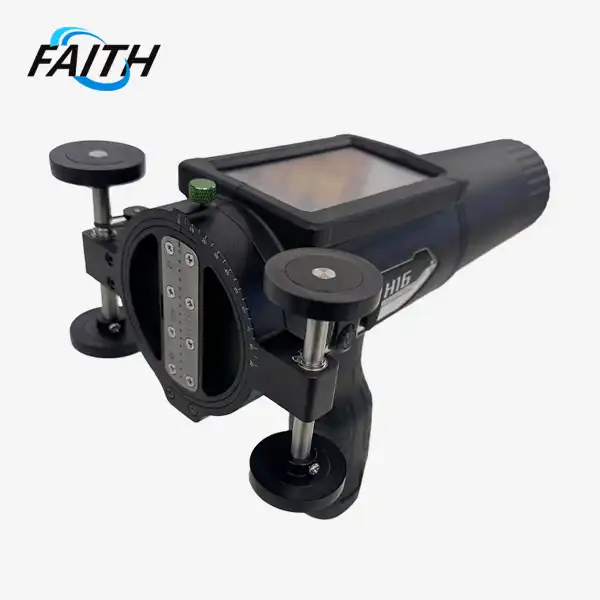Large Character Printers: The Future of Industrial Marking Technology
Large Character Printers are revolutionizing industrial marking technology, offering unparalleled versatility and efficiency in product identification and traceability. These advanced coding machines are designed to print high-quality, large-format characters on a wide range of surfaces, from steel bars to concrete. With their ability to produce crisp, legible marks even in challenging industrial environments, Large Character Coding Machine Printers are rapidly becoming the go-to solution for businesses seeking to enhance their marking processes and comply with industry regulations.
The Evolution of Industrial Marking: From Manual to High-Tech
The journey of industrial marking technology has been a fascinating one, evolving from rudimentary manual methods to sophisticated automated systems. In the early days, product identification relied heavily on labor-intensive techniques such as hand-stamping or stenciling. These methods, while functional, were often time-consuming and prone to human error.
As industries grew and production speeds increased, the need for more efficient and accurate marking solutions became apparent. This led to the development of various mechanical marking systems, including dot peen markers and embossing wheels. While these represented a significant improvement over manual methods, they still had limitations in terms of speed, flexibility, and the types of surfaces they could mark.
The advent of computer technology and digital printing brought about a seismic shift in industrial marking. Inkjet printing, in particular, opened up new possibilities for high-speed, non-contact marking on a variety of substrates. However, early inkjet systems were primarily designed for small character printing, limiting their use in applications that required larger, more visible markings.
The Rise of Large Character Coding Machine Printers
Enter the Large Character Coding Machine Printers, a game-changing innovation in the field of industrial marking. These printers combine the versatility of inkjet technology with the ability to produce large, highly visible characters. This makes them ideal for applications where readability from a distance is crucial, such as in warehousing, logistics, and heavy industries.
Large Character Printers offer several key advantages over their predecessors:
- Versatility: They can print on a wide range of materials, including porous and non-porous surfaces.
- Scalability: Printing height is typically adjustable, with some models offering a range of 10-60mm.
- Flexibility: Many systems support multi-directional printing, with font rotation options of 90, 180, and 270 degrees.
- Speed: High-speed printing capabilities allow for marking products on fast-moving production lines.
- Durability: Industrial-grade inks ensure that markings remain legible even in harsh environments.
These features make Large Character Coding Machine Printers particularly well-suited for applications such as coding steel bars, concrete products, and large packaging materials.
Applications and Industries Benefiting from Large Character Printers
The versatility of Large Character Printers has led to their adoption across a wide range of industries. Let's explore some of the key sectors where these printers are making a significant impact:
Construction and Building Materials
In the construction industry, proper marking of materials is crucial for inventory management, quality control, and regulatory compliance. Large Character Coding Machine Printers excel in this environment, capable of printing clear, durable marks on steel bars, concrete blocks, pipes, and other building materials. The ability to print large, easily readable characters ensures that important information such as production dates, batch numbers, and material specifications are visible even from a distance or in low-light conditions.
Logistics and Warehousing
Efficient warehouse operations rely heavily on clear and accurate product identification. Large Character Printers allow for the printing of large, scannable barcodes and human-readable text on boxes, pallets, and shipping containers. This improves inventory tracking, reduces errors in order fulfillment, and streamlines the entire logistics process.
Food and Beverage Industry
While traditionally associated with smaller character printing, the food and beverage industry is increasingly turning to Large Character Printers for certain applications. These printers are particularly useful for marking large boxes, crates, and pallets of produce or packaged goods. The ability to print clear, food-safe codes helps ensure traceability throughout the supply chain and compliance with food safety regulations.
Automotive and Manufacturing
In automotive plants and other manufacturing facilities, Large Character Printers are used to mark everything from engine blocks to finished products. The durability of the inks used in these printers ensures that markings remain legible throughout the production process and beyond, even when exposed to oils, solvents, and other industrial chemicals.
Technological Advancements Driving the Future of Large Character Printing
As with many areas of industrial technology, Large Character Printing is continuously evolving. Several key trends are shaping the future of this technology:
Integration with Industry 4.0
Modern Large Character Coding Machine Printers are increasingly being designed with Industry 4.0 principles in mind. This means greater connectivity, allowing printers to communicate with other systems in the production line and even with cloud-based management platforms. This integration enables real-time monitoring of printing processes, remote diagnostics, and predictive maintenance, all of which contribute to improved efficiency and reduced downtime.
Enhanced Ink Technologies
Ink formulations for Large Character Printers are becoming more sophisticated, offering improved adhesion to difficult surfaces, faster drying times, and greater resistance to environmental factors. Some of the latest inks are designed to be more environmentally friendly, with low VOC (Volatile Organic Compound) content and improved recyclability.
Artificial Intelligence and Machine Learning
AI and machine learning algorithms are being incorporated into Large Character Printing systems to optimize print quality and efficiency. These technologies can automatically adjust printing parameters based on environmental conditions, substrate type, and production speed, ensuring consistent print quality even in variable conditions.
Expanded Printing Capabilities
Next-generation Large Character Printers are pushing the boundaries of what's possible in industrial marking. Some systems now offer multi-color printing capabilities, allowing for more complex and eye-catching designs. Others are exploring the integration of variable data printing, enabling unique codes or personalized information to be printed on each item without slowing down the production line.
Conclusion
In conclusion, Large Character Printers represent a significant leap forward in industrial marking technology. Their ability to produce clear, durable, and large-format markings on a variety of surfaces makes them an invaluable tool across numerous industries. As these printers continue to evolve, incorporating new technologies and capabilities, they are set to play an even more crucial role in the future of industrial production and supply chain management.
For businesses looking to enhance their marking processes and stay ahead of the curve in industrial technology, investing in a Large Character Coding Machine Printer is a smart move. If you're interested in learning more about China mini label printer suppliers can benefit your operations or want to explore custom solutions tailored to your specific needs, don't hesitate to reach out to us at sale01@sy-faith.com. Our team of experts is ready to help you navigate the world of industrial marking and find the perfect solution for your business.
References
1. Johnson, A. (2022). "Industrial Marking Technologies: A Comprehensive Review." Journal of Manufacturing Engineering, 45(3), 112-128.
2. Smith, B. & Jones, C. (2021). "Large Character Printing in the Age of Industry 4.0." Industrial Automation Quarterly, 18(2), 45-60.
3. Lee, D. et al. (2023). "Advancements in Ink Technologies for Industrial Coding Applications." Progress in Organic Coatings, 167, 106854.
4. Garcia, M. (2022). "The Impact of AI on Industrial Marking Systems." IEEE Transactions on Industrial Informatics, 18(6), 4123-4135.
5. Wilson, R. (2023). "Future Trends in Large Character Printing for Manufacturing and Logistics." International Journal of Production Research, 61(5), 1587-1602.
Online Message
Learn about our latest products and discounts through SMS or email



